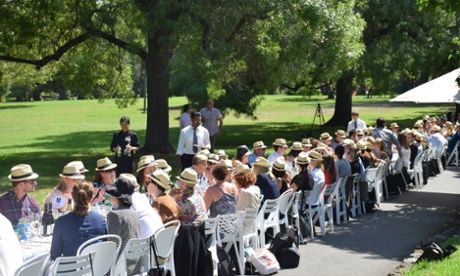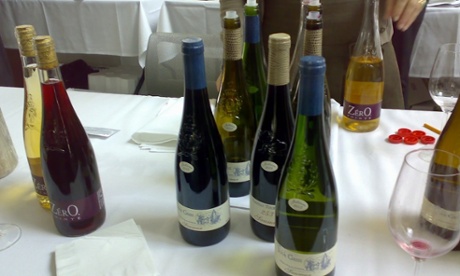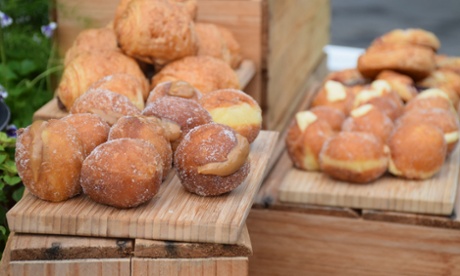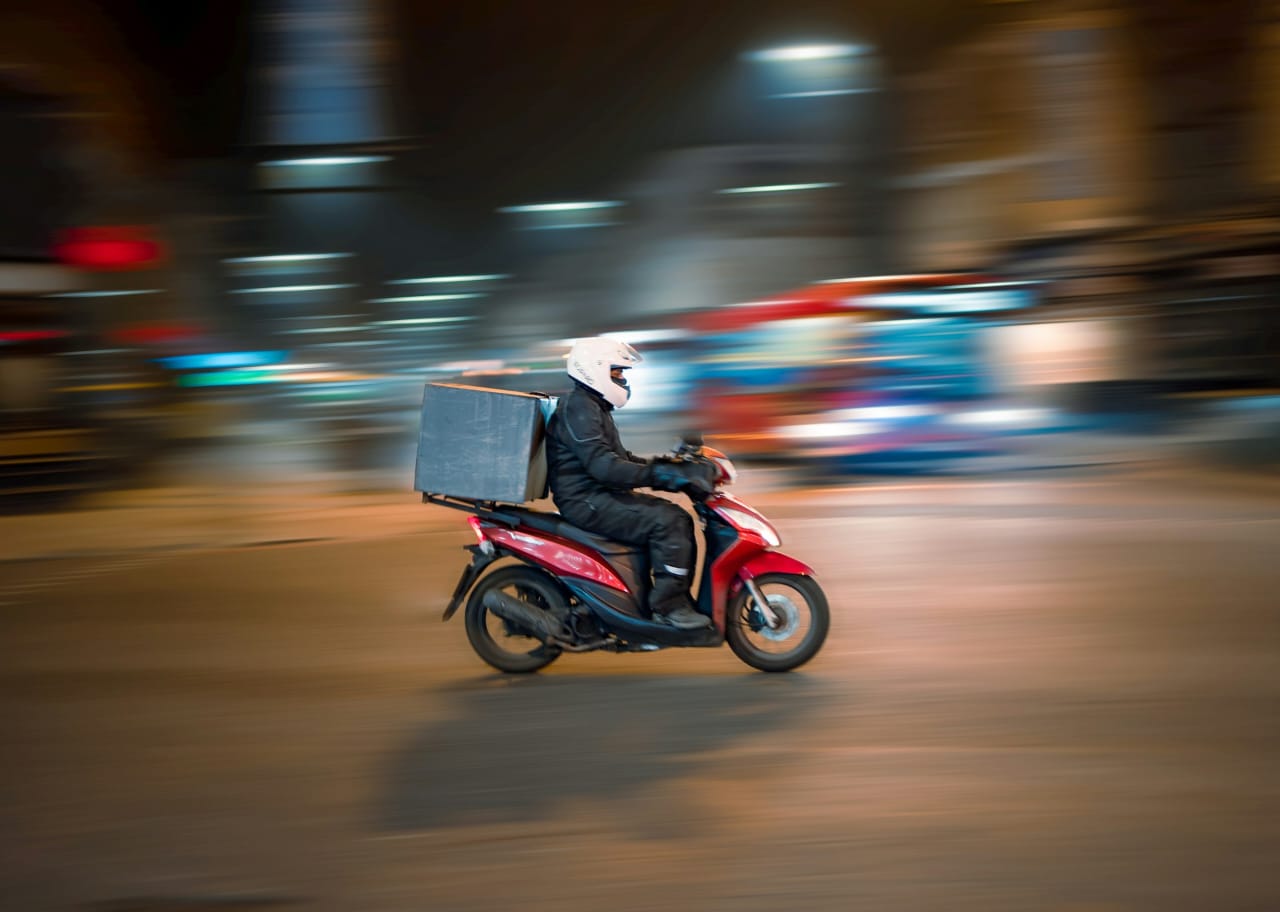How could you go wrong with that combination? Here are some other highlights of the Melbourne food and wine festival
As befitting a 23-year-old, the Melbourne food and wine festival celebrated its birthday on Gertrude Street at latest zeigesisty bar - Belle's Hot Chicken.
The food was pure southern comfort, pork that had been cooking for days over a pit, flavoured with a vinegary apple cider and plenty of pork crackling to liven up the texture of soft, silky pork on fluffy white bread.
The opening night party was the start of 15 days across Victoria celebrating the Melbourne food and wine festival.
The festival is bigger than just Melbourne - there are events across the state.
More than 300,000 people participate each year, partaking in everything from the long lunch with 1603 other guests, to one hundred people in a progressive dinner crawl around the city to "ten people doing a bread making course or touring a regional winery. There's lots of nooks and crannies to the festival," says festival chief Natalie O'Brien.
Here are some of the picks of the festival.
The World's Longest Lunch
In Melbourne's clogged events calender, its only a truly special event that can claim to be an institution. The World's Longest Lunch has been going for 23 years and, according to O'Brien attracts of repeat customers who come each year with groups of friends.
Held this year on a a sunny Friday in in the Fitzroy gardens, the lunch hosted 1604 guests - 13% of whom are international visitors. The table winds through the edge of the gardens measuring 530m long.
The three-course menu was designed by chefs Shane Delia and Adriano Zumbo. If you missed out on the Melbourne event, on 13 March there will be more than 20 long lunches across regional Victoria. You can grab a bite in picturesque locations across the state including Sale, Ballarat, Bendigo and the Grampians.

The World's Longest Lunch 2015. Photograph: Tourism Victoria/flickr
Masterclass series
It was a sunny Sunday morning after a long, late night of eating (dinner at Supernormal - one of the most interesting and fun restaurants in Melbourne). Off I trudged a masterclass in Indian food and wine matching. Eugh ... really? At 11:30am?
But the session - of Spice and Wine - was one of the highlights of the festival. Adam D'Sylva, the chef at Melbourne's upmarket Indian joint Tonka, talked food and wine pairing with Shashi Singh - a winemaker from Avani in the Mornington Peninsula.
We started with a madras crusted scallop with verbena pickled pear and fennel. It went well with a 2012 Hochkirch reisling from Henty in Victoria. The chargrilled Western Plains pork belly, chickpea and pork crackling with pickled relish was matched with a Yarra Valley chardonnay, a Gamay from Gippsland and a Syrah from the Mornington Peninsula.
D'Sylva said most people associate Indian food with beer, due to the profileration of surbuban Indian joints with limited wine lists.
"There is a beer and Indian food connection in people's minds. It's not a traditional part of Indian culture to have wine with food. Now in India, the wine culture is growing."
Singh says "there's a misconceptions that beer will counter the spice in Indian food." But the acidity and pepper of the selected wines were perfect matches for the heat and spices of the food.
Biodynamic wine makers - Return to Terroir
Foodie friends on seeing the festival program urged me to spend Sunday afternoon at something called Return to the Terroir. Sounding like immersive psycho-drama, I turned up to Melbourne town hall to discover instead tables covered in wine bottles with distributors and producers keen to discuss biodynamic winemaking.
Membership to this group of winemakers is by invitation only and is based on the standard of the wine and farming practices. What unites this group of winemakers is as much a philosophy as a taste.

Return to Terroir. Photograph: jm3 on Flickr/flickr
Terrior is a French term, describing land featuring many elements such as soil composition and weather which produces the distinctive flavours of each wine. A generous slosh of the product was available at individual stalls - and 350 wines were available for tasting.
Each wine tasted unlike anything I had tried before. The properites in the soil, the weather, and even practices such as harvesting at full moon, or planting horn manure preparation into the soil added distinctive flavours to the wine.
The horn manure preparation is a common biodynamic technique that involves cow manure placed in a horn from a lactating cow and buried in the soil over the winter. By spring, it produces "a hommus-like substance", according to producers, and this substance is applied in small quantities in the soil to help build soil structure.
It was eye-opening and mouth watering. And for $65 admission price, you got to keep your Riedel glass.
Artisan pop-up bakery
2015 is shaping up to be the year of bread. Master baker Eric Kayser has just released his epic book of bread recipes, while Brasserie Bread in Sydney launched its new single origin sourdough at the start of March. The flour in the $8 loaf of sourdough can be traced to specific fields and farmers, who have grown the wheat for the specific purpose of making the bread.
So it's no surprise people have been flocking to baking events at the Melbourne food and wine festival.

One of the most popular combinations of the festival has been anything featuring "artisan bread, coffee and wine", Natalie O'Brien says. "How can you go wrong with that combination?"
Festival guest Justin Gellatly (co-founder of London's Bread Ahead bakery) has been baking at the pop-up festival artisan bakery and bar at Southbank and "his donuts had sold out by 8am," says O'Brien.
The bakehouse hosts baking classes and workshops but also functions as a bar, breadshop and cafe. It's open until March 15.
Adriano Zumbo dessert at the World's Longest Lunch. Photograph: Tourism Victoria/flickr









